Nylon-string vs steel-string acoustic guitars: what's the difference?
We pit steel-string guitars head-to-head with their nylon-string counterparts. What are the main differences, and which is best for you?
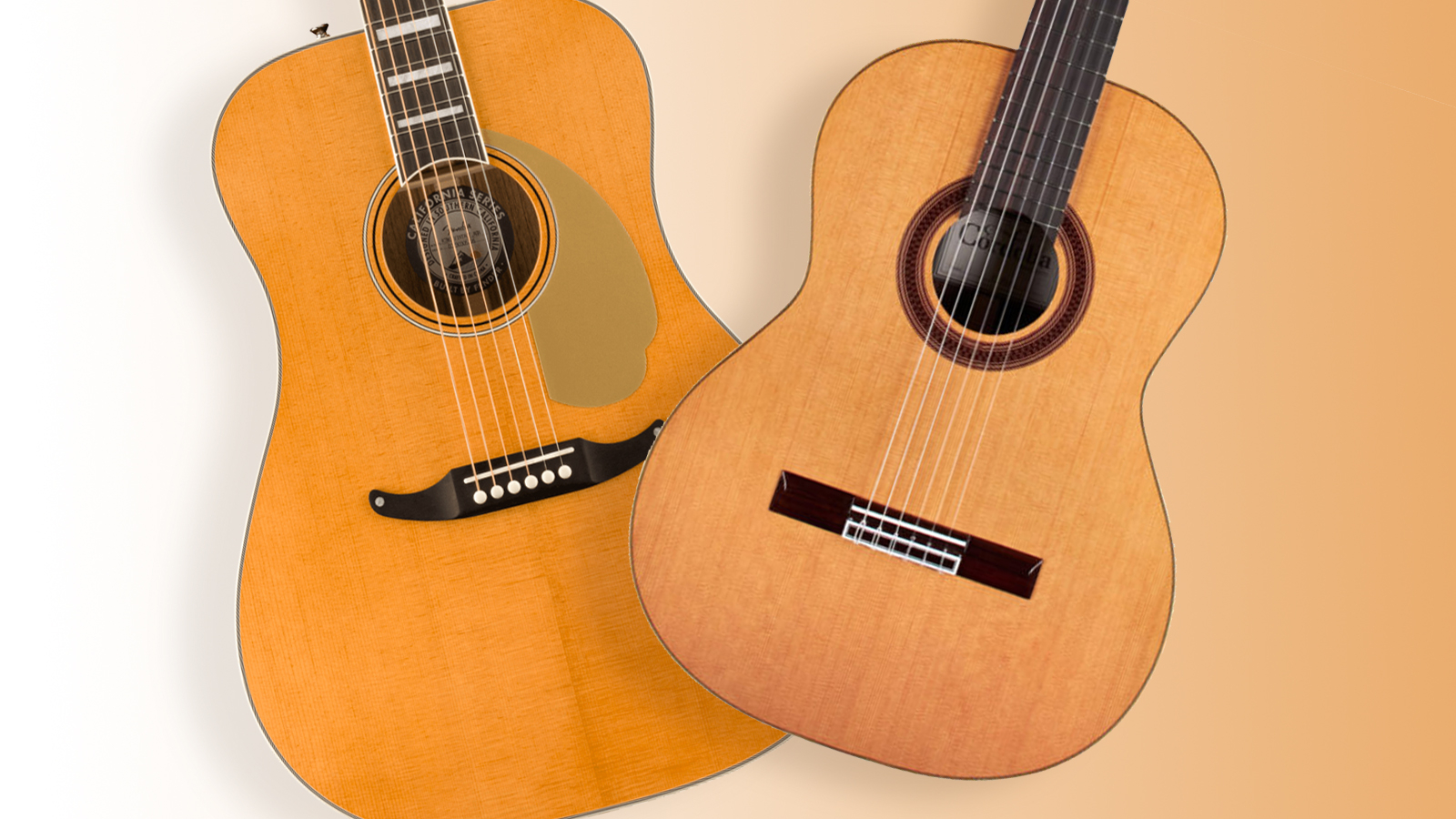
To non-musicians I’m sure that steel-string and nylon-string guitars probably look almost indistinguishable – they’re just acoustic guitars. However, anyone who has listened to both side-by-side will immediately recognise that, tonally, they’re miles apart.
Their timbre – tonal quality or colour – is so different that each is now strongly associated with specific genres of music. So much so that bringing a nylon-string guitar to a rock performance or a steel-strung dreadnought to a classical performance is akin to bringing a knife to a gunfight.
Why do they sound so different, and which is best for you? Let’s find out.
Nylon-string vs steel-string: At a glance
Nylon-string guitar
- Tonal character: Warm, mellow with soft attack
- No. of strings: 6 strings, made from nylon, with 3 bass strings of metal-wound nylon filament
- Fretboard radius: Flat
- Nut width: Wide. Typically, 1 3/64” (52mm) or more
- Truss rod: Rarely installed
- Tonewoods: Spruce top with rosewood back and sides is the classic combination. A cedar top will add further warmth. Flamenco guitars often have bodies made of cypress
Steel-string guitar
- Tonal character: Brighter, more ‘metallic’ with a sharper attack
- No. of strings: 6 strings, made from steel, with bass strings metal-wound with a steel core
- Fretboard radius: Radiused
- Nut width: Less wide. Typically, 1 11/16” (42mm) and upwards
- Truss rod: Yes
- Tonewoods: Spruce top with rosewood back and sides is the classic combination. Mahogany is also popular for additional mid-range punch and top-end clarity
Nylon-string vs steel-string: Features
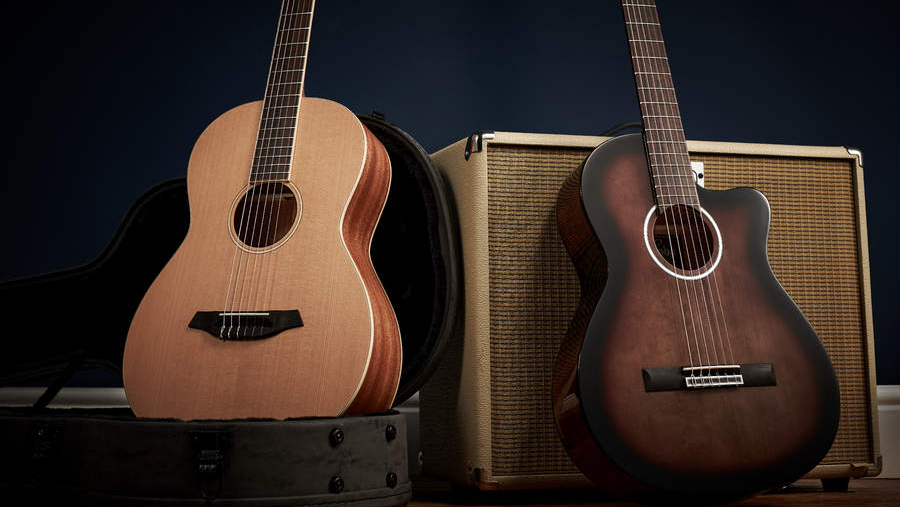
The stand-out feature for both steel-string and nylon-string guitars is, of course, their tone. They sound entirely different, yet both can be magnificent in the right context - and the distinctions in tone are not only caused by their choice of acoustic guitar strings.
Nylon-string guitars, often referred to as classical guitars or Spanish guitars, sound warmer, softer and more mellow than steel-string guitars. They also have a richer midrange and lower end, but less projection. Most of these characteristics are due to the strings but build and tonewoods are hugely influential too.
Nylon strings have a lower tension than steel strings, which means that when they are plucked less energy is produced, resulting in less high frequency content and lower volume. By contrast, steel string guitars have a crisper, brighter tone with a sharper attack and higher volume.
Of course, trying to describe the sound is like trying to accurately describe the colour of a sunset; it’s almost impossible. So, don’t fall under the misconception that steel-string guitars lack warmth, or that nylon-string guitars lack volume.
Get the MusicRadar Newsletter
Want all the hottest music and gear news, reviews, deals, features and more, direct to your inbox? Sign up here.
The next biggest influence on tone is construction. In one shape or another, guitar-like instruments have existed for centuries, but it wasn’t until the mid-19th Century that legendary Spanish luthier Antonio de Torres Jurado developed the gut-strung, large-bodied, fan-braced instrument that we’d still recognise as an acoustic guitar today.
A little later, over in the US, a small number of luthiers, who were influenced by Torres’ guitars as well as Germanic violin construction, started to experiment with X-bracing and steel strings. The most notable company was, of course, Martin, but even it didn’t focus its production on steel strings until the 1920s, driven by the demand for Hawaiian music. A decade on, in a quest for more volume to enable guitarists to be heard in jazz ensembles, Martin introduced its large, boxy dreadnought series, still one of the most popular guitar shapes today.
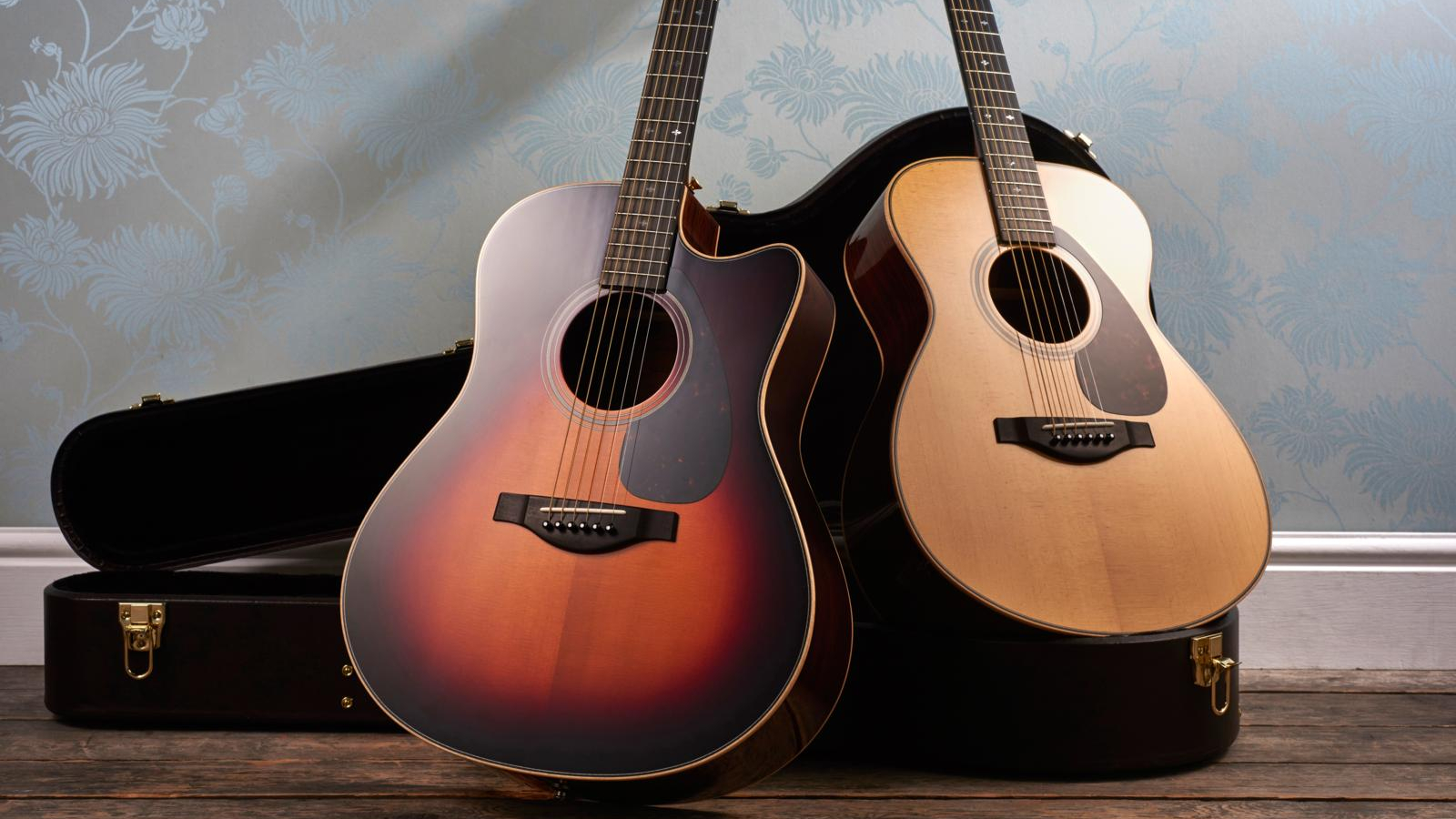
So, two styles of guitar emerged into the 20th Century: the delicate, fan-braced, gut-string Spanish guitar and its heavily built, X-braced, steel string, ‘Made in the USA’ counterpart. Gut strings, sometimes erroneously called cat-gut, fell out of favour in the 1950s with the arrival of nylon and, more recently, carbon.
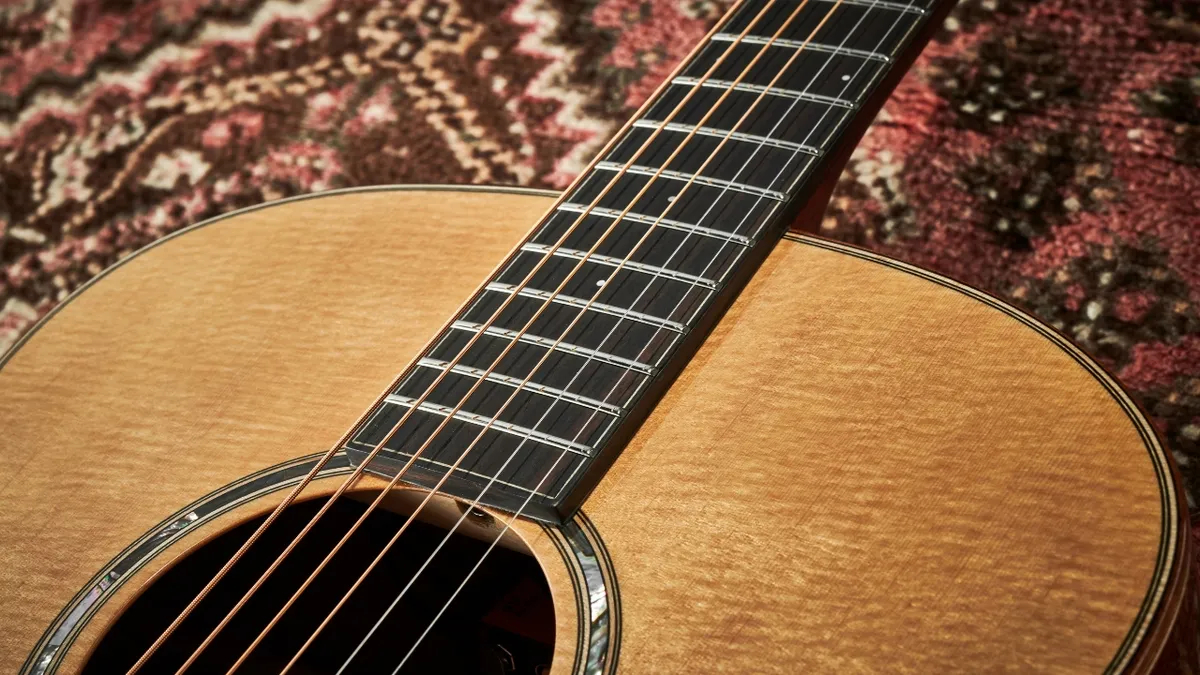
What acoustic guitar string gauges should I use?
Our definitive guide to stringing your acoustic with the right gauge to suit your playing style
Steel strings are under such tension that a metal truss rod – usually made from steel – is required to stop the neck from folding in on itself. Most truss rods are adjustable, either at the heel of the neck or just behind the nut, enabling neck relief to be adjusted to compensate for changes in temperature and humidity.
Strictly speaking, nylon-string guitar necks don’t need to be reinforced with a strong yet weighty truss rod, so the vast majority don’t have one. However, the Californian brand Córdoba is a well-known exception.
Steel-string necks are also relatively narrow and carry a curved radius fretboard. A wide range of nut widths are used, typically falling somewhere between 1 11/16” (42mm) and 1 ¾” (44.5mm). Fretboard radius also varies from a curvy 12” (305mm) right up to a much flatter 20” (508mm).
Traditional nylon-string necks are considerably wider at the nut, often 1 3/64” (52mm) or more, and fretboards are almost inevitably flatter than a deflated pancake. The additional real estate is needed to make room for the six chunky nylon strings – string spacing is often a finger-defying 12mm – and the flat fretboards make it easier to accurately fret notes when playing fingerstyle. Conversely, the curvy fretboards found on steel string guitars make it less demanding to fret barre chords, because they follow the curvature of the finger.
Dabbling with a nylon-string guitar, when your primary instrument is a steel-string or an electric guitar, takes a lot of getting used to, so many brands now make ‘cross over’ guitars with narrower nuts of around 1 15/16” (49mm). They combine the tone of a nylon-string guitar with a playing experience that’s closer to a steel-string.
You may also have noticed that the tuners are quite different. More often than not, a nylon-string guitar has two channels routed through the headstock to accommodate ornate slot-head tuning machines. Steel-string guitars, on the other hand, rarely have slotted headstocks. Instead, the preference is usually for tuning pegs. Very occasionally, tuning pegs can be found on high-end, nylon-string guitars too.
The vast majority of nylon-string guitars share the proportions decided on by Torres all those years ago, so they all look very similar. Overall length is usually in the region of 38 – 40” (965 – 1010mm), with the most common scale lengths being 25.6 - 26.5” (650 - 660mm). Scaled-down guitars for smaller-framed players and children are available, dropping in quarter sizes from ¾ to ¼.
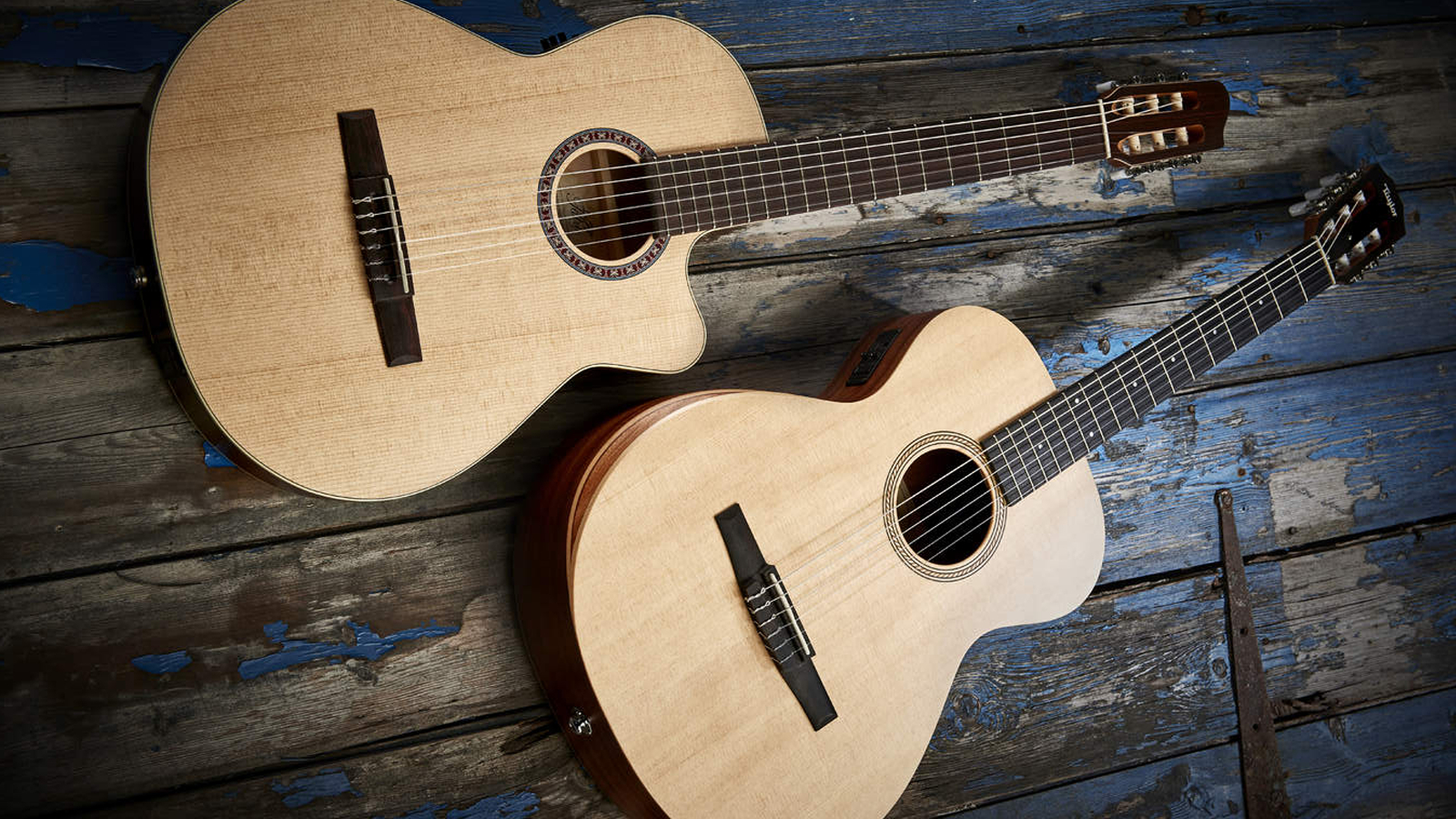
Steel-string guitars are available in a huge variety of sizes, from massive dreadnoughts and jumbos to diminutive parlour and travel guitars. This wide choice has more to do with tonal footprint than player size. The larger guitars are built for volume and bass response, whereas the smaller instruments exhibit a sweeter, more coherent, balanced tone that shines when it comes to techniques such as fingerstyle. Go too small, though, and the lack of bass, lower-midrange, and volume makes for a very weedy tone. For most players mid-sized guitars, such as the Martin OM or Taylor Grand Auditorium, hit that Goldilocks tonal sweet spot.
A spruce top with rosewood back and sides is the enduring, go-to tonewood combination for both styles of guitar. This timber duo provides a wonderful clarity, one that’s balanced across the entire tonal range. Some steel-string players prefer mahogany for its mid-range punch and crystal highs, while jumbos are traditionally built with maple, a bright-sounding tonewood that tempers their naturally bass-heavy response.
Nylon-string guitars rarely vary too much from the spruce/rosewood dynamic, the only common exception being the use of cedar for tops, an outstanding tonewood that contributes additional warmth and depth. Flamenco guitars are built for their high-end attack rather than sustain, making cypress a popular alternative to rosewood for backs and sides.
It’s very common for mid-priced steel-string guitars and many crossover guitars to have an onboard acoustic pickup system and perhaps a pre-amp tucked away inside. This is a rare feature for classical or flamenco guitars.
Nylon-string vs steel-string: Feel/Playability
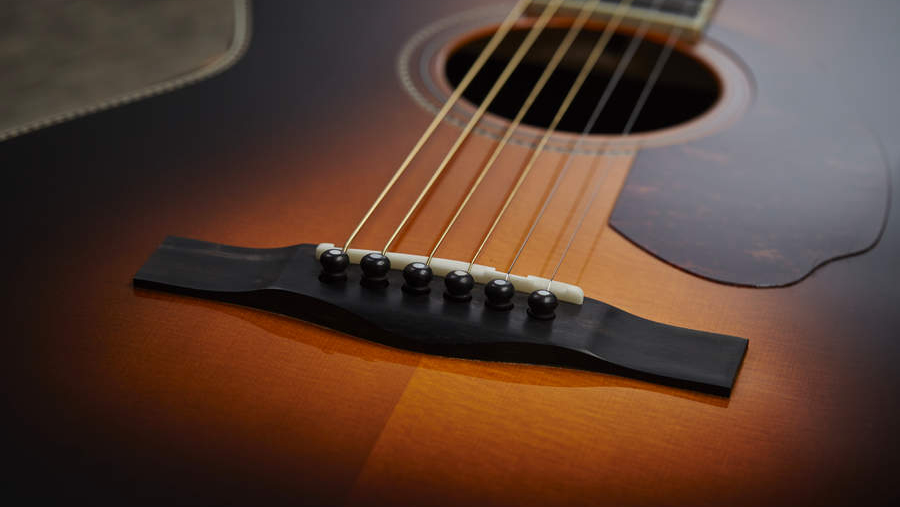
A steel-string guitarist trying a nylon-string guitar for the first time will be overwhelmed by the expansive, flat fingerboard, the high action and the thick, slack strings. Similarly, a classical guitarist trying a steel-string instrument will find the neck impossibly narrow and the strings bitingly thin and sharp.
Neither is right or wrong, better or worse. They’re just so different they take a lot of getting used to. A crossover guitar, such as one from Yamaha’s NTX series or Córdoba’s Fusion line, can make the transition a lot more comfortable for steel-string players who fancy the occasional brush with nylon.
Sadly, cheap acoustic guitars of all types are often assembled with hopeless tuners and actions so high that they can be as painful to play as they are to listen to. Invariably, these instruments are aimed at beginners, so if you are just starting out, avoid these monstrosities and instead buy the best instrument you can afford.
Nylon-string vs steel-string: Who are they best for?

Nylon-string guitars are the de facto choice for classical music and flamenco, genres where steel really doesn’t get a look in. Jazz, Latin jazz, bossa nova, gypsy jazz, world and fusion are all genres that also welcome the nylon-string guitar with open arms.
Country artist Willie Nelson famously continues to favour a road-worn nylon-string guitar over the more obvious steel-string alternatives. However, it’s the massive influence of Latin in chart music over the past few decades that gives nylon its best chance of re-entering the mainstream.
Other than classical and flamenco, steel-string guitars are good for most other genres. Frankly, if you are seeking a beginner acoustic guitar and you aspire to play a variety of genres, you're better off choosing steel strings as your first instrument.
Nylon-string vs steel-string: Verdict

There are no winners or losers here, with neither guitar being superior or inferior to the other. However, a nylon guitar is more suited to classical, flamenco and bossa nova genres than a steel-string. Just as a steel-string is more suited to almost every other genre. This does, of course, mean that the steel-string is the more versatile choice, which explains why it is so popular.
If you’re already a steel player, don’t dismiss nylon completely, because it can add an additional tonal dimension to your compositions. A crossover guitar may just be the ticket for forging new and interesting sonic directions.
Similarly, if you’re a classical player, then resist the temptation to be sniffy about steel-string guitars because both instruments share a very similar heritage. Whichever you choose to play, and I hope it’s both, either style of guitar can deliver a huge amount of fun for both you and your audience.
When Simon's childhood classical guitar teacher boasted he 'enjoyed a challenge', the poor man had no idea how much he'd underestimated the scale of the task ahead. Despite Simon's lack of talent, the experience did spark a lifelong passion for music. His classical guitar was discarded for an electric, then a room full of electrics before Simon discovered the joys of keys. Against all odds, Simon somehow managed to blag a career as a fashion journalist, but he's now more suitably employed writing for MusicRadar and Guitar World. When not writing or playing, he can be found terrifying himself on his mountain bike.
“Its mission is simple: unleash the power of any amplifier or line-level source without compromise”: Two Notes promises a “watershed” in tube amp control with the Torpedo Reload II
MusicRadar deals of the week: Enjoy a mind-blowing $600 off a full-fat Gibson Les Paul, £500 off Kirk Hammett's Epiphone Greeny, and so much more










